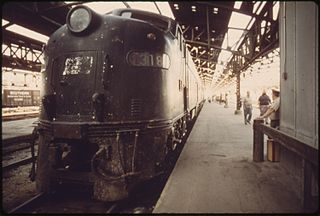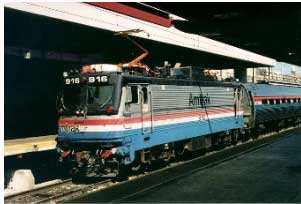Subsurface enclosed-concourse train stations can be breeding grounds for soot and other harmful air pollution.
Such is the case with some train boarding and alighting platform areas at Chicago’s Union Station, according to the U.S. Environmental Protection Agency (EPA) in its Nov. 5, 2015 “EPA Study Finds Elevated Particulate Levels in Air on Train Platforms at Chicago Union Station” press release.
The EPA wrote: “The U.S. Environmental Protection Agency today released an air quality study that documents elevated concentrations of particulate matter (PM2.5) in ambient air on train platforms at Union Station in Chicago. The concentration of PM2.5 in air on the train platforms was 23 – 96 percent higher than concentrations recorded on nearby streets on the days that monitoring was conducted last summer. The study also found that the highest concentrations of PM2.5 occur during rush hours. Higher particulate concentrations were found at the south platforms than at the north platforms, and particulate levels are highest near locomotives.”
“EPA studied air quality at Union Station over a three week period during June and July 2015,” the federal regulatory agency revealed. “Scientists used portable air monitors on publicly accessible platforms to measure concentrations of PM2.5 in the air at various times between 6 a.m. and 6 p.m. EPA took similar measurements at street level near the station. EPA conducted 64 platform tests and 35 background tests.”
Exposure to pollution by train passengers and crews at concentrations in some cases 96 percent higher than that which was recorded on station-area streets in the open air outside should be motivation to try to remedy this situation even if such exposure times are short, comparatively speaking.
Sorely lacking at the station, apparently, is adequate ventilation.
Along these lines, “EPA is discussing the results of the study with Metra, Amtrak and representatives of several buildings with ventilation systems that impact air quality at Union Station,” the federal regulator stressed. “Short-term options to improve air quality on the train platforms include optimizing the existing ventilation systems above Union Station and changing operational procedures. Long-term options include installation of additional ventilation systems and measures to reduce particulate emissions.”
If the latter means that locomotive prime mover upgrades significantly reduce the concentrations of harmful air pollutants at platform level are coming down the line, that option should be pursued with a great sense of urgency. The cost of such upgrades, though, may be a limiting factor if money for such modification work is scarce. Time will tell what remedies will be implemented to improve air quality on the train platforms at Chicago Union Station.
Ideally, the best solution of all would be for all trains servicing the depot to be electrified, the source of electricity supplied generated from 100 percent renewable energy.

Lower image above: Charles O’Rear, U.S. National Archives and Records Administration collection
Published by Alan Kandel
